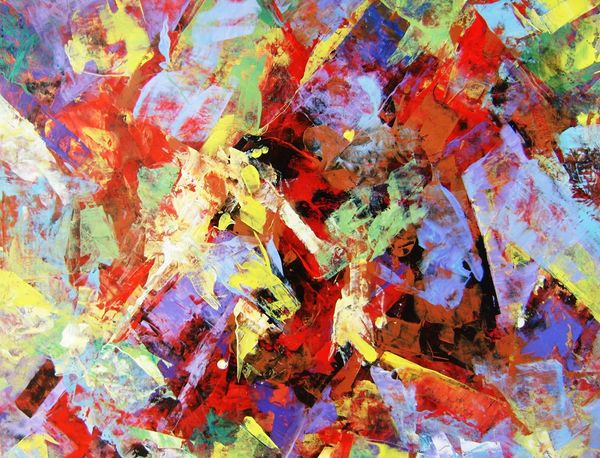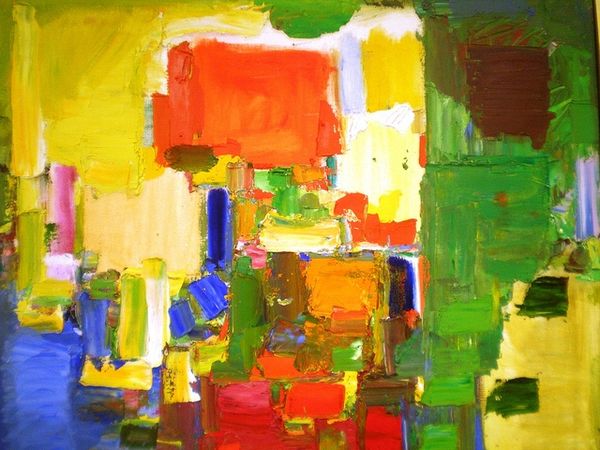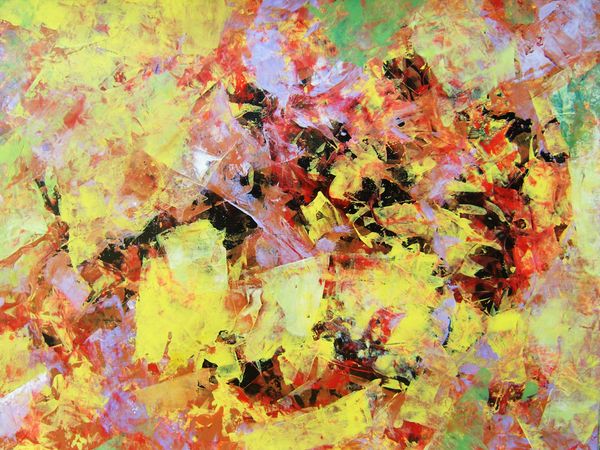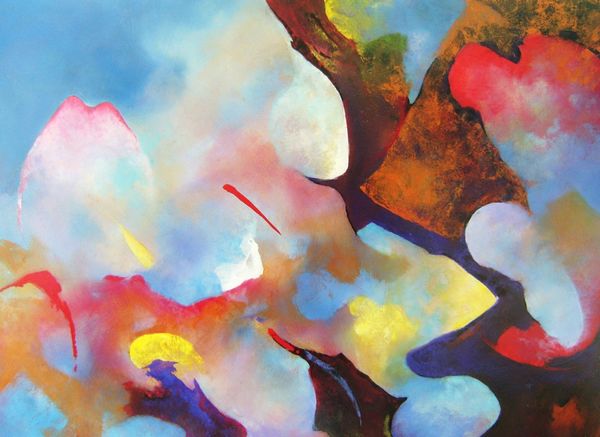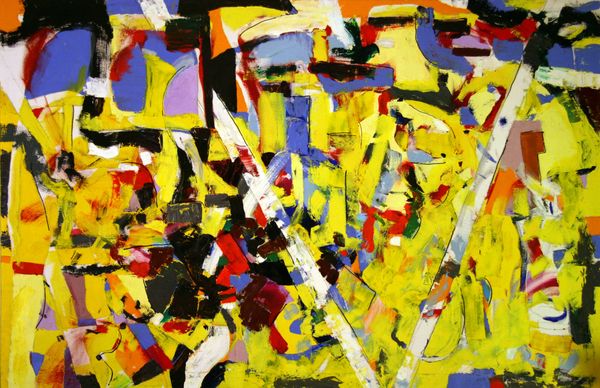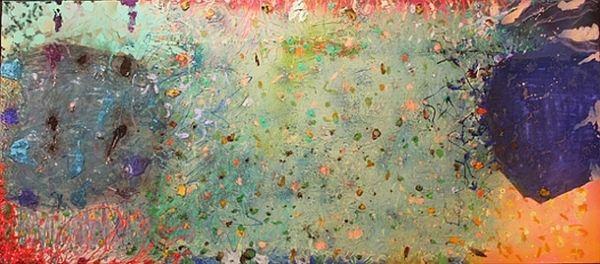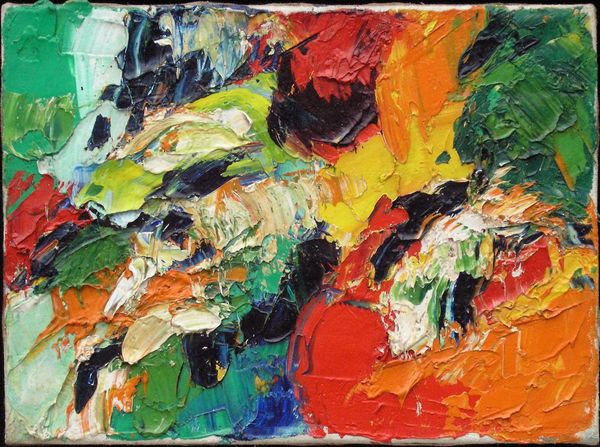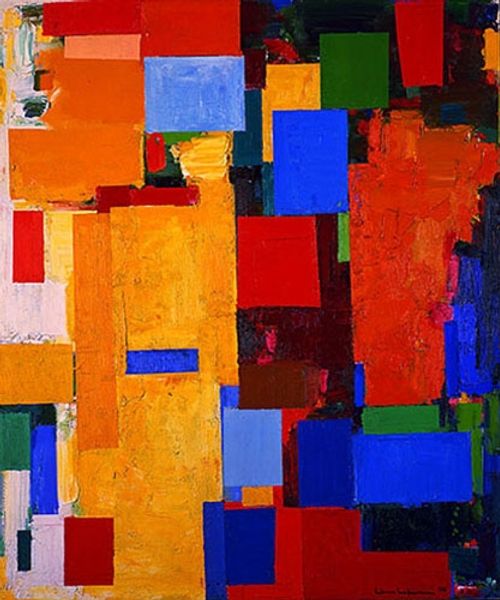
painting, acrylic-paint
#
abstract-expressionism
#
abstract expressionism
#
abstract painting
#
painting
#
landscape
#
acrylic-paint
#
acrylic on canvas
#
geometric
#
abstraction
#
modernism
Copyright: Audrey Flack,Fair Use
Editor: This is Audrey Flack’s *Abstract Landscape* from 1950, created with acrylic paint. Looking at it, I'm struck by how the composition feels almost chaotic, yet the colors evoke a sense of warmth. What do you see in this piece? Curator: Precisely, chaos organized. Observe the layering of acrylic, how each brushstroke asserts itself individually, yet contributes to the overall structure. Do you see how Flack employs a limited palette of primarily earth tones? Editor: Yes, there's definitely a sense of the autumnal in those reds, oranges, and yellows, offset by greens and grays. But is that her only goal: replicating those specific landscape colours? Curator: Colour operates here less as representation and more as a structural element. The dynamism arises from the contrasts. Note how passages of intense chroma abut muted tones. Where do you think this pushes our interpretation of 'landscape'? Editor: It definitely moves away from literal depiction. It feels more like an emotional or psychological landscape than a physical place. The tension comes from seeing these planes of warm colour interspersed by planes of colder shades. The image has an internal conflict. Curator: Indeed. Conflict is the very engine of formalism! This painting's meaning isn't found in mirroring external reality but in the push-and-pull within its own constructed reality. Editor: That makes a lot of sense. So, it's not about what it represents, but how it's put together. It feels very revolutionary and relevant to today's deconstructionist ethos! Curator: Precisely. It's the grammar that creates the story! Now go forth and find these stories yourself!
Comments
No comments
Be the first to comment and join the conversation on the ultimate creative platform.

